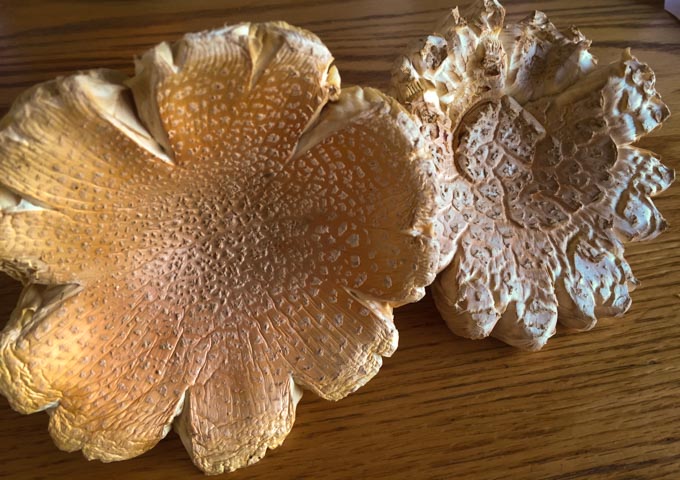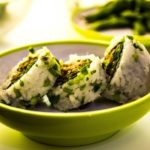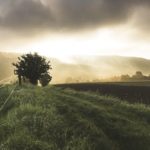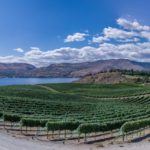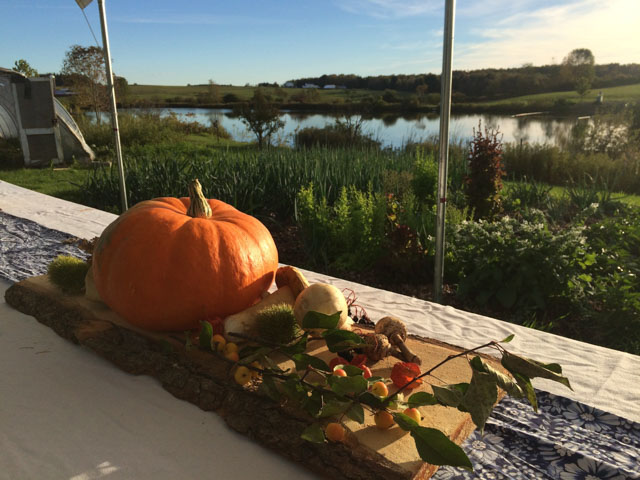
“This is wintergreen,” Harold said with a look of delight. He pointed to a small plant whose leaves accompanied a single, perfect little red berry. “You know,” said Harold, pausing thoughtfully as he scrutinized it and then immediately glanced to the foliage around him, “like the gum you used to get as a kid.” My mind leapt to chewing wintergreen mint gum, which I realized I hadn’t had since I was a teenager. I remember wondering where it came from, having imagined that it was some mint like spearmint or peppermint which I hadn’t seen before. I was surprised to finally be introduced to the source.
He then he grabbed a sassafras plant and proceeded to tell us how the leaves are mashed up to serve as the main ingredient of authentic gumbo. The entire session was packed with opportunities to learn. So much that I started to feel that my head was spinning. It was a special day, which started in a unique way.
Getting to know Master Forager Harold Reynolds
I met Harold at the Jamestown, NY parking ramp, next to the busy Route 86. He was going to show a few of my friends and me some foraging techniques. When I saw Harold he was out in the grass, bent over, looking around. Harold has a wiry build, with good reason; he is obsessed with physical fitness and being outdoors. He sometimes walks eighteen miles each way to work and back, runs in half marathons, and spends hours outside wandering through the woods, looking for nature’s goodies. He plans to walk the Appalachian Trail this spring with his son who is a Marine, just as Harold once was.
When he saw me, he walked over to where I was standing and we started to talk. I could hardly hear him because of the blaring of a tractor-trailer horn. After some pleasantries we started to discuss foraging. Harold said we could forage right there next to the highway. I was confused. While pointing to a large tree he said, “just take a look at this oak tree.” And then he motioned to some acorns on the ground. I could smell exhaust from the highway. He said, “you can eat those.”
He proceeded to tell me his process for making acorn flower out of these nuts that squirrels eat. He then produced a loaf of bread, shaped like an acorn, which he had baked the night before. He broke off a piece and implored me to have some, it was tasty.
Then we drove to the Roger Tory Peterson Institute where Harold took us on a journey through the walking trails tucked behind the ornithological center. As we passed a fire hydrant, Harold pointed to it and said, and here is the worst place in the world to forage. When I asked why, imagining some sort of complex scientific answer, he chuckled and said, “because every dog in a five mile radius has probably pissed next to it.” Harold has a light manner and keeps things fresh by pitching curveballs.
Learning about Wild Edibles at the Roger Tory Peterson Institute
The Roger Tory Peterson Institute was a fitting setting for our adventure because it was where I had first met Harold a few months before. I catered the Chautauqua Local Food’s Farm to Table and Wild Edible event in celebration of the opening premier of the 55th annual “Art and the Animal” exhibition. The Roger Tory Peterson Institute had a fantastic display of artwork and we worked hard to match it with equally stunning local fare. I met Harold Reynolds for the first time and wild edibles expert, Chef Garrett Taylor.
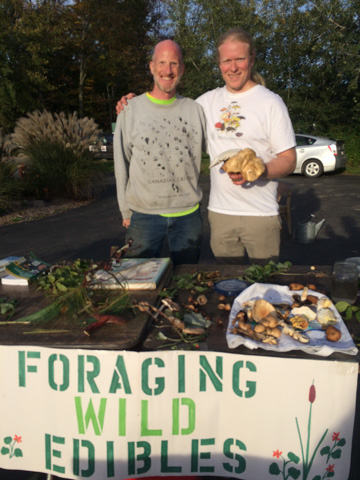
They were serving up fresh mushroom tacos from a medley of wild mushrooms, many of which they foraged. I was awed by the passion they displayed for the topic and the humble ease with which they discussed the complex jargon of foraging. The event was delicious, fun, and well-attended; there was a unique energy in the warm evening air. Here is a brief video created by Torrey Johnson, which will give you a sense of the event:
Gathering has deep roots that predate agriculture and as I watched Harold I could not help but think about some primordial connection to something that is deeply ingrained in human beings. And also entwined with the gathering and eating habits of other members of the Animal Kingdom.
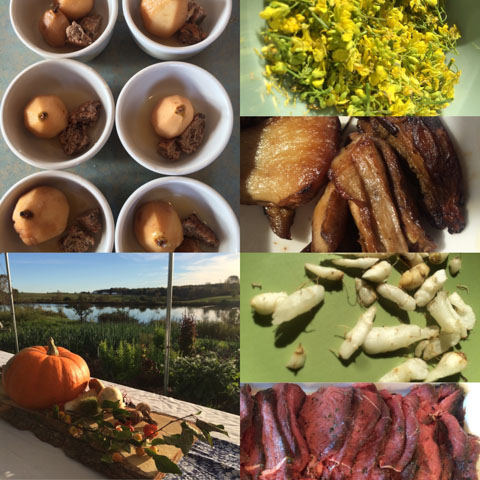
I was thankful that Harold would take the time to teach us more about foraging. I noticed that Harold is excited to share his passion because, as he says, “foraging is this great wondrous walk with no end in sight.” And as he says, “you glean from nature what there is along the way.”
Loren Mayshark is the award-winning author of Death: An Exploration and Academic Betrayal. For more, you can visit his website lorenmayshark.com and you can keep up with him on Twitter at @LorenMayshark. Sign up for his newsletter and receive regular updates and a free gift.
